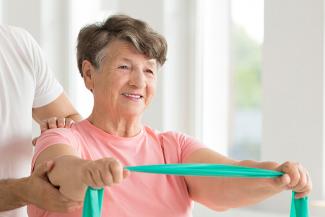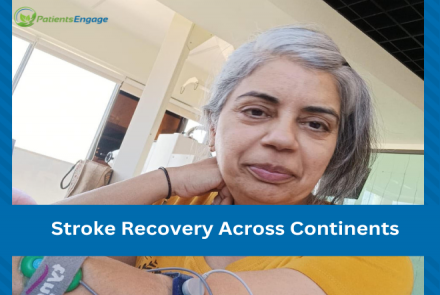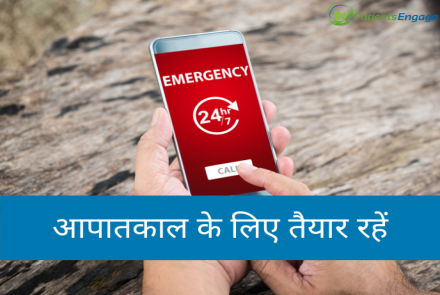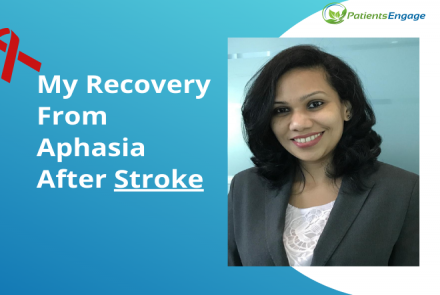
G Srinithya, Senior Occupational Therapist at NIMHANS, highlights the various specialised rehabilitation programs for different types of stroke related disabilities ranging from visual, cognitive to swallowing impairment.
Which cognitive rehabilitation intervention is best for improvement of attention and memory problems in patients with stroke?
Following stroke, many people experience difficulties in arousal, attention, concentration, memory, perception, problem solving, decision making, insight and other areas of cognition that impede their ability to function in everyday activities. Cognitive abilities and disabilities must be considered in addressing all areas of functioning including communication, mobility, self-care, social interaction, recreational pursuits, and other productive activities such as school or work.
Related Reading: Stroke Rehabilitation Helps Relearn Lost Skills
Cognitive rehabilitation interventions aim to:
- Reinforce, strengthen or re-establish previously learned patterns of behaviour
- Establish new patterns of cognitive activity through internal compensatory cognitive mechanisms for impaired neurological systems.
- Establish new patterns of activity through external compensatory mechanism such as external aids, or environmental structuring and support.
Which Visual programme is most beneficial for visual field defects after a stroke?
Stroke-related visual problems Ocular and visual impairment in stroke patients include gaze palsies and other eye movement disorders, ptosis, anisocoria, neglect, reduced visual acuity, and visual field defects (VFDs). A thorough eye examination is necessary. Other ocular conditions such as cataract, macular degeneration, diabetic or hypertensive retinopathy and refractive errors may influence the visual function and have to be carefully evaluated.
What type of food would you use to stimulate the swallow in an acute stroke patient with known risk of aspiration?
(Dysphagia is defined as inability to swallow) A patient who is aspirating more than 10% of food or liquid consistencies or whose combined oral and pharyngeal transit time is more than 10 seconds, regardless of positioning or facilitation techniques, is inappropriate for oral eating. This patient needs a non-oral nutrition method until she or he is again capable of eating or drinking. Patients who lack the endurance to take in sufficient calories also may require non-oral feedings or supplements. The two most common procedures for non-oral feedings are the nasogastric tube and the gastrostomy. While the patient is on a non-oral program, the Occupational Therapist concentrates efforts on retraining the patient in oral motor control and swallowing. The pre-feeding training can occur whether the patient is on bolus or continuous feedings.
What are the nutritional means to fight extreme fatigue often seen in stroke survivors?
Post-stroke fatigue is described as ‘a feeling of early exhaustion with weariness, lack of energy and aversion to effort that develops during physical or mental activity and is usually not ameliorated by rest. Fatigue is a multidimensional motor-perceptive, emotional and cognitive experience.
Fatigue can be classified as either objective or subjective; objective fatigue is defined as the observable and measurable decrement in performance occurring with the repetition of a physical or mental task, while subjective fatigue is a feeling of early exhaustion, weariness and aversion to effort. Eating a healthy diet can reduce your risk of having another stroke. Eating a diet low in fat and salt and high in fruits and vegetables reduces the risk factors for another stroke like high cholesterol, high blood pressure, being overweight and diabetes.
What factors affect the outcome of stroke rehabilitation?
Motivation and participation in post-stroke rehabilitation are closely associated, in that patients who are motivated are more likely to participate in rehabilitation. Motivation is also an important determinant of favorable rehabilitation outcomes. Various studies have documented motivation as the interplay of individual characteristics. These individual characteristics include: the internal quality or personality of the individual; their psychological attributes; and the environment, which is the social context and the culturally enforced norms within it.
What percentage of stroke patients makes a full recovery?
Statistics on Recovery
- 10% of stroke survivors recover almost completely
- 25% recover with minor impairments
- 40% experience moderate to severe impairments requiring special care
- 10% require care in a nursing home or other long-term
- 15% die shortly after stroke.
Can you provide some tips on how to choose the right rehab facility?
Decisions about rehabilitation services are typically made by the patient, family, and hospital staff at discharge from acute care. Doctors and team members should provide information about local rehabilitation program options, taking into account the patient’s needs and medical condition, but the patient and family make the final choice. Goal setting during stroke rehabilitation is a small task that can reap huge benefits. Specific, measurable, achievable, realistic, and time-framed (SMART) goals are used for goal setting for rehabilitation. They can provide coordination between a multidisciplinary team to develop a plan for the individual needs of patients.















